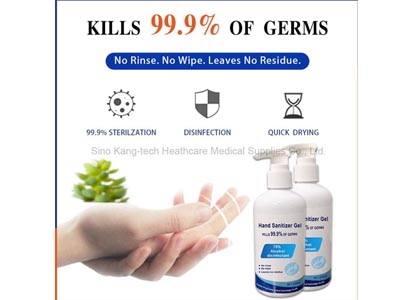Why Do We Need Disinfectants?
Regular use of the correct type of disinfectant on surfaces throughout the facility is critical to help prevent the spread of diseases such as COVID, influenza (flu) and the common cold. Since there are many types of disinfectants on the market, it is important to understand how they work (including their advantages and disadvantages) in order to make informed decisions about how best to disinfec
Almost every environment on Earth contains bacteria and microorganisms. You may be surprised to learn that there are more than 600,000 bacteria on a square inch of human skin.1 Most bacteria are harmless to humans. But the organisms that cause disease - called pathogens - can be dangerous, even deadly. One of the most contagious and dangerous diseases in recent history is COVID-19, which is caused by the SARS-CoV-2 virus.
Regular use of the correct type of disinfectant on surfaces throughout the facility is critical to help prevent the spread of diseases such as COVID, influenza (flu) and the common cold. Since there are many types of disinfectants on the market, it is important to understand how they work (including their advantages and disadvantages) in order to make informed decisions about how best to disinfect and protect people in your facility.
For better disinfection, facilities should choose A disinfectant that meets the following conditions
1. Have a realistic contact time
Ideally, the disinfectant will remain wet and in contact with the pathogen for at least as long or longer than the contact time listed on its label. Unfortunately, many disinfectants dry out before they reach contact time, especially those with long contact times or high alcohol content. Since employees do not always reapply disinfectants, this may mean that surfaces are not adequately disinfected. It is best to use a disinfectant that is easy to use and effective with a short contact time.

Disinfectant
2. No damage to assets
Facility furnishings and equipment can be costly to repair or replace. Some disinfectants can damage surfaces or shorten the life of these assets. Understanding the compatibility of disinfectants with these surfaces can help reduce unnecessary damage and costs.
3. Will be compatible with cleaning tools
Some cleaning tools can inhibit the effectiveness of disinfectants. For example, cotton and some microfiber cleaning tools can bind to quaternary ammonium compound-based disinfectants (quats), preventing the release of the disinfectant onto the surface. Facilities should ensure that disinfectants are compatible with their existing cleaning tools or purchase new tools that do not reduce the efficacy of the disinfectant.
4. Safe and pleasant for employees and guests
Some disinfectants can irritate the eyes, skin or respiratory tract, may require the use of personal protective equipment (PPE), or have a strong odor. This may cause employees to minimize the use of the product, which can affect results. Facilities should look for a disinfectant that is safer and more pleasant for employees to use, thereby reducing workplace injuries and complaints from visitors and employees.
"In addition to choosing the right disinfectant, facilities should clearly define roles and responsibilities for cleaning and disinfection so employees know who cleans and disinfects what, when, with what and how often," Cook added. "Then, through a validation process, facilities can monitor and measure the effectiveness of cleaning and sanitizing to ensure compliance with the process."